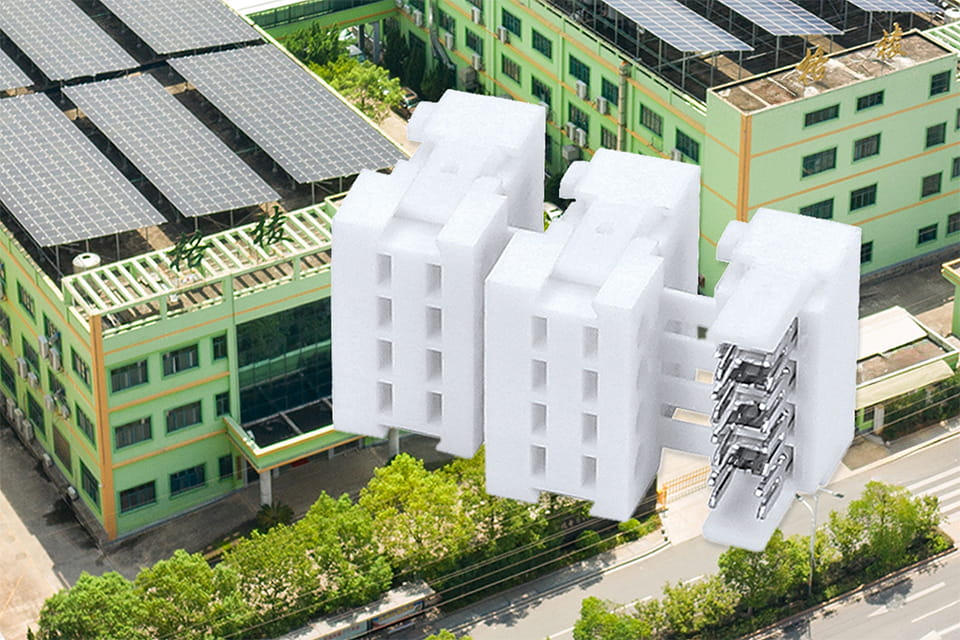How to Choose the Right Electrical Connector?

The operation of a connector can affect the functionality of the entire device, and a suitable electrical connector can greatly improve efficiency. So, how do we choose a suitable connector? There are several aspects to consider.
1. Type of the electrical connector
The type of electrical connector selected is determined by factors such as what it will connect to and where it will be used. The location where the electrical connector is used (indoor, outdoor, corrosive environment, etc.) can affect whether the connector needs to be sealed or shielded outside of the insulation body. The type of connector determines what type of terminal to use and how many conductive terminals to arrange. This also involves some terminal technology references.
2. Electrical requirements of the electrical connector
When selecting an electrical connector, the electrical requirements of the product must be considered, such as what voltage and current requirements the product has, whether the connector can be applied well in such electrical conditions. In addition, we also need to consider other electrical conditions such as resistance, allowable resistance change, millivolt drop, maximum current value, maximum voltage value, surge current value, characteristic impedance, VSWR (voltage standing wave ratio), insertion and withdrawal loss, and EMI shielding efficiency.
3. Environmental requirements of the electrical connector
The temperature, humidity, and other environmental conditions are determined by the location where the electrical connector is in, so the location and expected environment should be considered. Other related storage conditions should also be included. The description of the environment should also cover the requirements for shock and vibration, including those from maritime transportation, as well as production environment conditions such as welding temperature and welding cycle duration.
4. Mechanical performance requirements of the electrical connector
For connectors, what volume and footprint are effective, what size tolerance is allowed, what is the insertion and withdrawal force of the terminal, and how durable is the connector (frequency of insertion and withdrawal)? These factors must be considered when selecting an electrical connector. For example, for printed circuit boards, it is important to determine the tolerance of the circuit board, which is the critical value for card edge connectors and the feasibility of reaching the critical value. For low-power circuits, the coating and substrate materials must be specified to be consistent with the signal standards and environmental grades.
5. Specifications of the electrical connector
Electrical connector manufacturers may use approximately 25 test agencies (specified specifications) as the source for all or part of the connector test specifications. Appropriate test specifications must be considered for specific applications, including internationally recognized standards.
1. Type of the electrical connector
The type of electrical connector selected is determined by factors such as what it will connect to and where it will be used. The location where the electrical connector is used (indoor, outdoor, corrosive environment, etc.) can affect whether the connector needs to be sealed or shielded outside of the insulation body. The type of connector determines what type of terminal to use and how many conductive terminals to arrange. This also involves some terminal technology references.
2. Electrical requirements of the electrical connector
When selecting an electrical connector, the electrical requirements of the product must be considered, such as what voltage and current requirements the product has, whether the connector can be applied well in such electrical conditions. In addition, we also need to consider other electrical conditions such as resistance, allowable resistance change, millivolt drop, maximum current value, maximum voltage value, surge current value, characteristic impedance, VSWR (voltage standing wave ratio), insertion and withdrawal loss, and EMI shielding efficiency.
3. Environmental requirements of the electrical connector
The temperature, humidity, and other environmental conditions are determined by the location where the electrical connector is in, so the location and expected environment should be considered. Other related storage conditions should also be included. The description of the environment should also cover the requirements for shock and vibration, including those from maritime transportation, as well as production environment conditions such as welding temperature and welding cycle duration.
4. Mechanical performance requirements of the electrical connector
For connectors, what volume and footprint are effective, what size tolerance is allowed, what is the insertion and withdrawal force of the terminal, and how durable is the connector (frequency of insertion and withdrawal)? These factors must be considered when selecting an electrical connector. For example, for printed circuit boards, it is important to determine the tolerance of the circuit board, which is the critical value for card edge connectors and the feasibility of reaching the critical value. For low-power circuits, the coating and substrate materials must be specified to be consistent with the signal standards and environmental grades.
5. Specifications of the electrical connector
Electrical connector manufacturers may use approximately 25 test agencies (specified specifications) as the source for all or part of the connector test specifications. Appropriate test specifications must be considered for specific applications, including internationally recognized standards.





